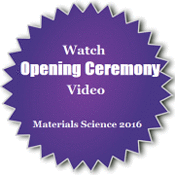
Jan J Dubowski
Université de Sherbrooke, Canada
Title: Digital etching of III-V semiconductors in aqueous solutions
Biography
Biography: Jan J Dubowski
Abstract
Etching of semiconducting materials at rates approaching atomic level resolution is of high interest to the advancement of technologies addressing fabrication of low-dimensional devices, tunability of their optoelectronic properties and precise control of device surface structure. The so- called digital etching that takes advantage of a self-limiting reaction has the potential to address some of these challenges. However, conventional applications of this approach proposed almost 30 years ago, require specialized and expensive equipment, which contributed to a relatively slow progress in penetration of digital etching to micro/nanofabrication processing schemes. We have observed that for photoluminescence (PL) emitting materials with negligible dark corrosion, it is possible to carry out PL-monitored photocorrosion in cycles analogous to those employed in digital etching. The advantage of this approach is that photocorrosion of materials, such as GaAs/AlGaAs heterostructures, could be carried in a water environment. This digital photocorrosion (DIP) process could be carried out in cycles, each approaching sub-monolayer precision. I will discuss fundamentals of DIP and, in particular, mechanisms responsible for achieving high-resolution etch rates of semiconducting materials. For instance, we have demonstrated a successful dissolution of a 1-nm thick layer of GaAs embedded between Al0.35Ga0.65As barriers in a 28% NH4OH:H2O, and we claimed that under optimized conditions a further enhanced resolution is feasible. The nm-scale depth resolution achieved with DIP and low-cost of the instrumentation required by this process is of a potential interest to specialized diagnostics, structural analysis of multilayer nanostructures and, e.g., revealing in situ selected interfaces required for the fabrication of advanced nano-architectures.
We have explored the sensitivity of DIP to perturbations induced by electrically charged molecules, such as bacteria, immobilized on semiconductor surfaces. Here, I will highlight our recent studies on detection of Escherichia coli and Legionella pneumophila bacteria immobilized on antibody functionalized GaAs/AlGaAs biochips. I will also discuss the application of this approach for studying antibiotic reactions of bacteria growing on biofunctionalized surfaces of GaAs/AlGaAs biochips.

